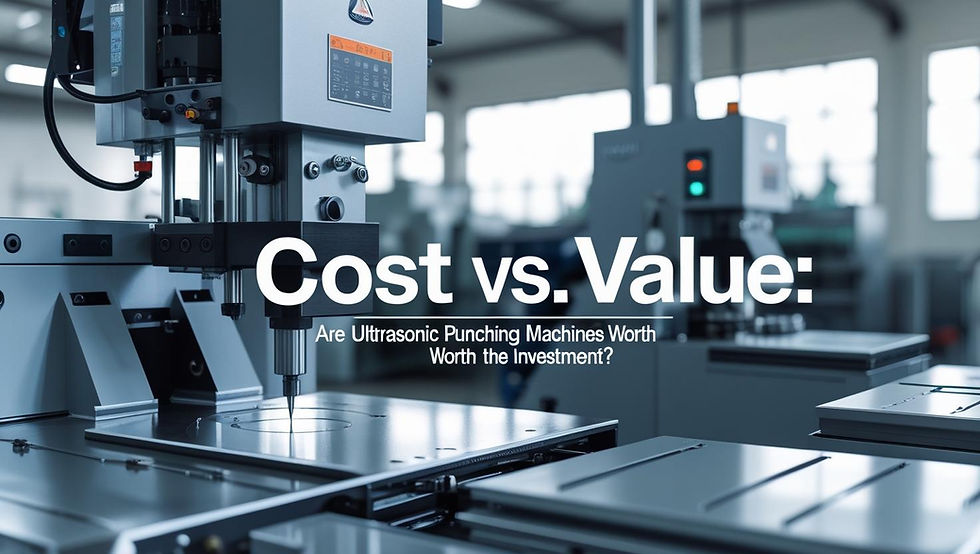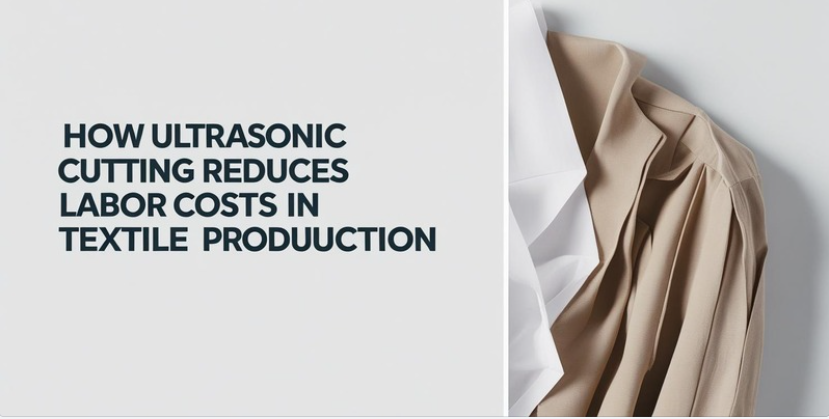A Buyer’s Checklist: Investing in Ultrasonic Fabric Cutting Technology
- ztzgsteeltech
- Jul 16
- 4 min read

In a world where precision, efficiency, and minimal waste are non-negotiables, ultrasonic fabric cutting technology has emerged as a transformative solution for textile professionals. Whether you're in garment manufacturing, non-woven product development, or automotive interiors, these machines offer speed, accuracy, and consistently clean finishes, no more fraying edges or labor-intensive trimming.
As demand for automation and material handling innovations continues to rise, more businesses are exploring ultrasonic cloth cutting machines to stay competitive and sustainable. But not all machines are created equal. This guide walks you through the ultimate checklist before making your purchase.
Understanding Ultrasonic Cutting Technology
Ultrasonic cutting relies on high-frequency mechanical vibrations typically in the 20 to 40 kHz range that generate localized heat. This heat allows blades to cut and seal fabrics simultaneously, leaving smooth, fray-free edges. Compared to traditional blades or laser cutters, ultrasonic machines produce virtually no dust, require minimal blade maintenance, and excel at handling delicate or synthetic textiles.
It's especially effective for synthetic fabrics like polyester, nylon, thermoplastic blends, and even multilayer composites. The result? Clean, sealed edges with no discoloration or distortion.
Top Benefits to Prioritize
When evaluating ultrasonic fabric cutting systems, keep these benefits top of mind:
Burr-Free Edges: No post-processing needed, thanks to simultaneous sealing.
Exceptional Precision: Some machines can achieve tolerances under 0.1 mm.
Material Versatility: Ideal for synthetics, blends, non-wovens, and laminated fabrics.
Production Speed: High throughput with minimal downtime between cycles.
Low Maintenance: No mechanical wear from blades or moving parts.
Energy Efficiency: Requires less power than heat knives or lasers, reducing operating costs.
Key Technical Specs to Verify
Not every ultrasonic cutting machine meets the same standards. Scrutinize these specifications before investing:
Frequency Range: Generally between 20 and 40 kHz. Higher frequencies suit thinner fabrics.
Power Output: Determines cutting ability and overall productivity.
Cutting Head Style: Choose between handheld, tabletop, or inline models.
Material Compatibility: Ensure support for your full range of textiles and composite layers.
Automation Integration: Can the system sync with CAD/CAM software or production lines?
Safety Features: Look for protective casing, low-noise operation, and ergonomic handling.
Operational Considerations
Even the best machine won’t yield results if it’s hard to operate or maintain. Consider:
User Training: Are setup and usage intuitive? Are manuals and tutorials available?
Maintenance Cycle: Check horn, blade, and transducer life expectancy.
Noise Levels: Ultrasonic frequency may create a high-pitched sound, opt for noise-dampening designs.
Companies like Zrintech, known for precision ultrasonic equipment, design their systems with user experience and reliability in mind, ideal for both beginners and seasoned operators.
Economic & Environmental Factors
Investing in ultrasonic cutting isn't just about performance; it's about return on investment and sustainability too:
Price Range: Entry-level models start around $1,300–$4,000, mid-range between $4,000–$11,000, and high-end units above $11,000.
Operating Costs: These systems are generally energy-efficient and use no consumables like blades or adhesive sprays.
Waste Reduction: Ultrasonic cutting significantly reduces scrap material, helping cut costs and environmental impact.
Certifications & Quality Indicators
Before placing your order, verify that the machine complies with major standards:
CE, ISO, and RoHS Certifications: These ensure electrical safety, quality management, and environmental compliance.
Factory Testing: Reputable manufacturers will provide test reports and pre-shipment validations.
Supplier Reputation: Look for brands with proven reliability, service support, and strong customer feedback.
Selecting the Ideal Machine Type
Depending on your production scale and technical requirements, your ideal machine type may vary:
Handheld Units: Great for custom projects or manual finishing.
Tabletop Models: Ideal for small-scale, semi-automated processes.
Fully-Automated Systems: Best for high-throughput industries with consistent materials.
If you're processing unique shapes or materials, check whether the manufacturer offers custom tooling, such as fold dies or pattern-specific blades.
Support, Warranty & Spare Parts
Reliable post-sale service is just as important as initial specs:
Warranty Period: Look for at least 12 months of coverage.
Spare Parts: Availability of horns, transducers, and electronics is crucial for long-term ROI.
Training & Support: Manufacturers should provide setup guides, video tutorials, and remote troubleshooting.
Space & Integration Requirements
Ultrasonic cutting machines come in various footprints:
Workspace Size: Ensure you have the required bench or floor space.
Utility Needs: Check for voltage, air pressure (if pneumatic), and software requirements.
Production Line Compatibility: Can the system integrate with conveyor belts, robotic arms, or sensors?
User Reviews & Real-World Use Cases
Nothing speaks louder than real-world performance. Seek insights from:
Medical & Hygiene Industry: Cutting surgical gowns or non-woven filters.
Automotive Interiors: Seamless trim for dashboards or seats.
Garment Manufacturing: Clean hems, sleeve trims, and collar linings.
Consistency across industries demonstrates a machine's adaptability and build quality.
Common Pitfalls & How to Avoid Them
Avoid these buyer missteps:
Paying for Unused Features: Don't overbuy automation unless truly needed.
Mismatched Frequency: Too low can damage thin materials; too high may underperform on dense layers.
Noise Overlooked: Machines lacking noise shields can create fatigue in open workshops.
Skipping Sample Tests: Always ask for sample cuts to test edge quality and speed.
Sustainability & ROI Outlook
Ultrasonic technology is a win-win for modern operations:
Eco-Friendly: Reduces chemical adhesives and energy use.
High ROI: Less rework, less scrap, and minimal labor.
Faster Production: Increases daily output without compromising quality.
By eliminating manual trimming and reprocessing, these machines often pay for themselves within months.
Checklist Summary
Here’s a quick recap before buying:
✅ Confirm frequency range and cutting power
✅ Match material compatibility and production needs
✅ Check safety, noise, and maintenance requirements
✅ Request demo/sample cuts
✅ Ensure certifications and post-sale support
✅ Plan for long-term spare parts access
Conclusion & Next Steps
Investing in ultrasonic fabric cutting technology is a strategic move for manufacturers focused on efficiency, sustainability, and high-quality results. With the right due diligence, you can select a machine that transforms your production line and delivers lasting value. Buy ultrasonic machines from this ultrasonic cloth cutting machine supplier that provides high quality products with better rates as well.
Still unsure which model fits your needs? Download this checklist and consult with a trusted supplier to test drive your options before purchase.



Comments